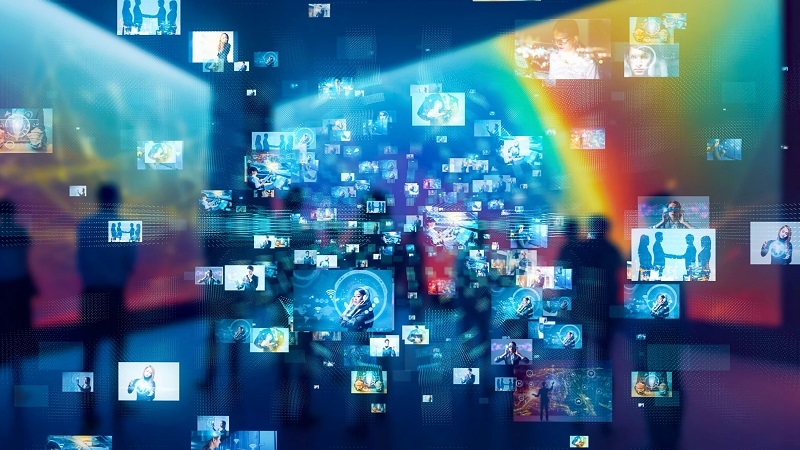
Virtual experiences in 2025 are shaping the way people connect. Online bonding activities, digital community building, and virtual events are no longer extra parts of life, they are right at the center. These spaces are not just screens, they are places where people laugh, talk, and create real connections.
People want connection, even if they are behind a screen. Online bonding activities now make it possible to share time and experiences with others, even if they are far apart. These activities are becoming common, and they do more than just fill time. They help people feel like they belong somewhere.
Group challenges are one of the simplest ways for people to bond. A group might take on a fitness session together, or solve puzzles, or even work on a fun project. What matters is the feeling that they are not doing it alone. The challenge creates a sense of team spirit, and people find themselves enjoying the process.
In many communities, people come together to tell stories. These are personal stories, daily life updates, or sometimes just lighthearted experiences. Listening to others and sharing one’s own story gives people a chance to see each other in a human way. It feels natural, and the simple act of storytelling builds trust.
Learning together online has become very common. Instead of learning alone, people attend group sessions, short workshops, or open discussions. This way, knowledge is shared and relationships are built at the same time. The act of learning feels less like a task and more like a community journey.
Virtual events in 2025 look and feel different from a few years ago. They are not only video calls where people join and leave. They are now complete experiences that bring participants into a space where they can interact freely.
Virtual events now look more like real events. People can explore halls, stages, and even lounges where they talk with others.
These events are open to people everywhere. Someone in one part of the world can be part of the same event as someone on the other side of the globe.
Attendees are no longer just watching a screen because they can talk to each other and build connections. It almost feels like as if people are physically meeting each other.
These changes make virtual events something more than simple gatherings. They feel like shared experiences that leave an impact.

Communities are becoming a part of everyday digital life. In 2025, digital community building is not about creating another chat room, it is about forming meaningful groups that continue to grow.
Smaller communities that focus on specific topics are becoming stronger. People join groups that share their interests, and the discussions feel more direct and personal. Members don’t get lost in large crowds and feel like their voice matters.
Mental health is openly discussed in many communities. Groups are made to let people share feelings, ask for advice, or just connect with others who understand. These safe spaces create comfort, showing that online places can also offer care.
Online communities allow people from different professional and academical backgrounds wo connect with each other and share their ideas. It can be the perfect platform for you to work on various projects by sharing different designs and planning how to execute them. This collaboration can offer you great results as you can combine your experience with someone who has better technical skills.
Technology is what makes virtual experiences run smoothly, but it works in the background. Tools like messaging apps, AI that helps with community needs, and even virtual reality bring people together without making them think about the process.
Thanks to these tools, people talk instantly, attend events easily, and join activities that once seemed out of reach. Technology does not lead the experience, but it makes sure everything feels simple.
Inclusion is now one of the main reasons why communities thrive. A community only grows when everyone feels like they belong.
Accessibility is important because people with different needs should be able to join without barriers. Diversity adds new voices, new stories, and new ideas that enrich the group. Global reach allows anyone, from anywhere, to share and learn without being left out.
When inclusion is the foundation, connections grow stronger.
Communities have found new ways to keep members engaged. Gamification is now common, and it makes the process more interesting and fun.
Members are rewarded with badges or points when they take part and contribute.
Lessons or workshops are often designed like games, which keeps people interested and active.
Small contests push members to be creative while also having fun with others.
Gamification adds energy, and it keeps people excited to return and engage more.
Work and learning have also changed through virtual experiences. In 2025, it is not always about applying with resumes or attending in-person classes. People now grow by being active in digital communities.
You can develop and sharpen your skills by talking and connecting with others. There is a high chance that you will not even notice that these things are helping you at first.
Online chats and bonding activities often lead to partnerships or work projects.
Teams spread across different places can now work like they are in the same room, building together without limits.
This shows how communities are shaping not just social life but also work and education.
Virtual experiences in 2025 are now part of daily life. From online bonding activities to digital community building and immersive virtual events, people are finding new ways to connect. These experiences prove that even from a distance, people can build bonds that are strong, lasting, and meaningful.
This content was created by AI